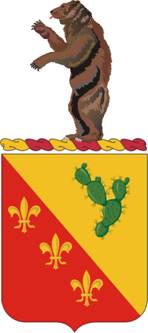Related Research Articles
The 134th Regiment of Foot was an infantry regiment of the British Army, created in 1794 and disbanded in 1796. The regiment was formed in Ireland by redesignating the newly raised 2nd Battalion of the 83rd Regiment of Foot, and did not leave Ireland before being disbanded in 1796.
The 133rd (Highland) Regiment of Foot was a Scottish infantry regiment in the British Army, created in 1794 and disbanded in 1795. The regiment was raised in northern Scotland by Simon Fraser, and did not see any active service; it served solely to recruit soldiers. On disbandment, the recruits were drafted into other regiments.
The 132nd (Highland) Regiment of Foot was a Scottish infantry regiment of the British Army, created in 1794 and disbanded in 1796. The regiment was raised by Duncan Cameron of Cullart, and did not see any active service; it served solely to recruit soldiers. On disbandment, the recruits were drafted into the Black Watch.
The 131st Regiment of Foot was an infantry regiment of the British Army, created in 1793 and disbanded in 1796. The regiment was raised by General Henry Edward Fox, with the colonelcy being transferred to Lowther Pennington, 2nd Baron Muncaster shortly thereafter.
The 125th Regiment of Foot was an infantry regiment of the British Army, created in 1794 and disbanded in 1796. It was raised at Stamford, Lincolnshire, under the colonelcy of Newton Treen.
The 127th Regiment of Foot was an infantry regiment of the British Army, created in 1794 and disbanded in 1796. It was raised under the colonelcy of General John Cradock, 1st Baron Howden.
The 116th Regiment of Foot was an infantry regiment of the British Army, formed in 1793 and disbanded in 1795, with some personnel sent to the 42nd Highlanders.
The 75th Regiment of Foot (Invalids) was an infantry regiment of the British Army from 1762 to 1768. It was originally raised as a regiment of invalids in June 1762, by John Lind, and numbered the 118th Foot; it was renumbered as the 75th the following year, and disbanded in 1768 or 1769.
The 114th Regiment of Foot was an infantry regiment of the British Army from 1794 to 1795. It was raised in April 1794 and was disbanded the following year.
The 114th Regiment of Foot (Royal Highlander Volunteers) was an infantry regiment of the British Army from 1761 to 1763.It was raised in October 1761, by Sir Allan MacLean of Torloisk. He was commissioned lieutenant in the 60th Foot Royal Americans at the beginning of the Seven Years' War and was severely wounded at Ticonderoga in 1758. He was then given one of the four NY Independent Companies until he returned to Scotland where he raised the 114th Maclean's Highlanders, or the Royal Highland Volunteers, as their Major Commandant. The regiment was disbanded in 1763.
The 109th Regiment of Foot (Bombay Infantry) was an infantry regiment of the British Army from 1862 to 1881, when it was amalgamated into The Prince of Wales's Leinster Regiment (Royal Canadians).
The 113th Regiment of Foot was an infantry regiment of the British Army from 1794 to 1795.
The 110th Regiment of Foot was an infantry regiment of the British Army from 1794 to 1795.
The 110th Regiment of Foot (Queen's Royal Musqueteers) was an infantry regiment of the British Army from 1761 to 1763.
The 109th Regiment of Foot was an infantry regiment of the British Army from 1761 to 1763.
The 107th Regiment of Foot was an infantry regiment of the British Army, raised by the East India Company in 1765. Under the Childers Reforms, it amalgamated with the 35th Regiment of Foot to form the Royal Sussex Regiment.

The 49th (Hertfordshire) Regiment of Foot was a line infantry regiment of the British Army, raised in 1743. Under the Childers Reforms it amalgamated with the 66th (Berkshire) Regiment of Foot to form the Princess Charlotte of Wales's in 1881.

The 129th Field Artillery Regiment is a regiment of the Field Artillery Branch of the United States Army, part of the Missouri Army National Guard. The 1st Battalion is the only active unit of the regiment, with the battalion Headquarters and Headquarters Battery in Maryville, Battery A in Albany, Battery B in Chillicothe, and Battery D in Independence. The battalion is a subordinate unit of the 130th Field Artillery Brigade, headquartered in Manhattan, Kansas.
The 87th Regiment of Foot was a line infantry regiment of the British Army. It was raised to help garrison the West Indies during the American Revolutionary War.
References
- ↑ "129th Regiment of Foot". regiments.org. Archived from the original on 16 October 2007.